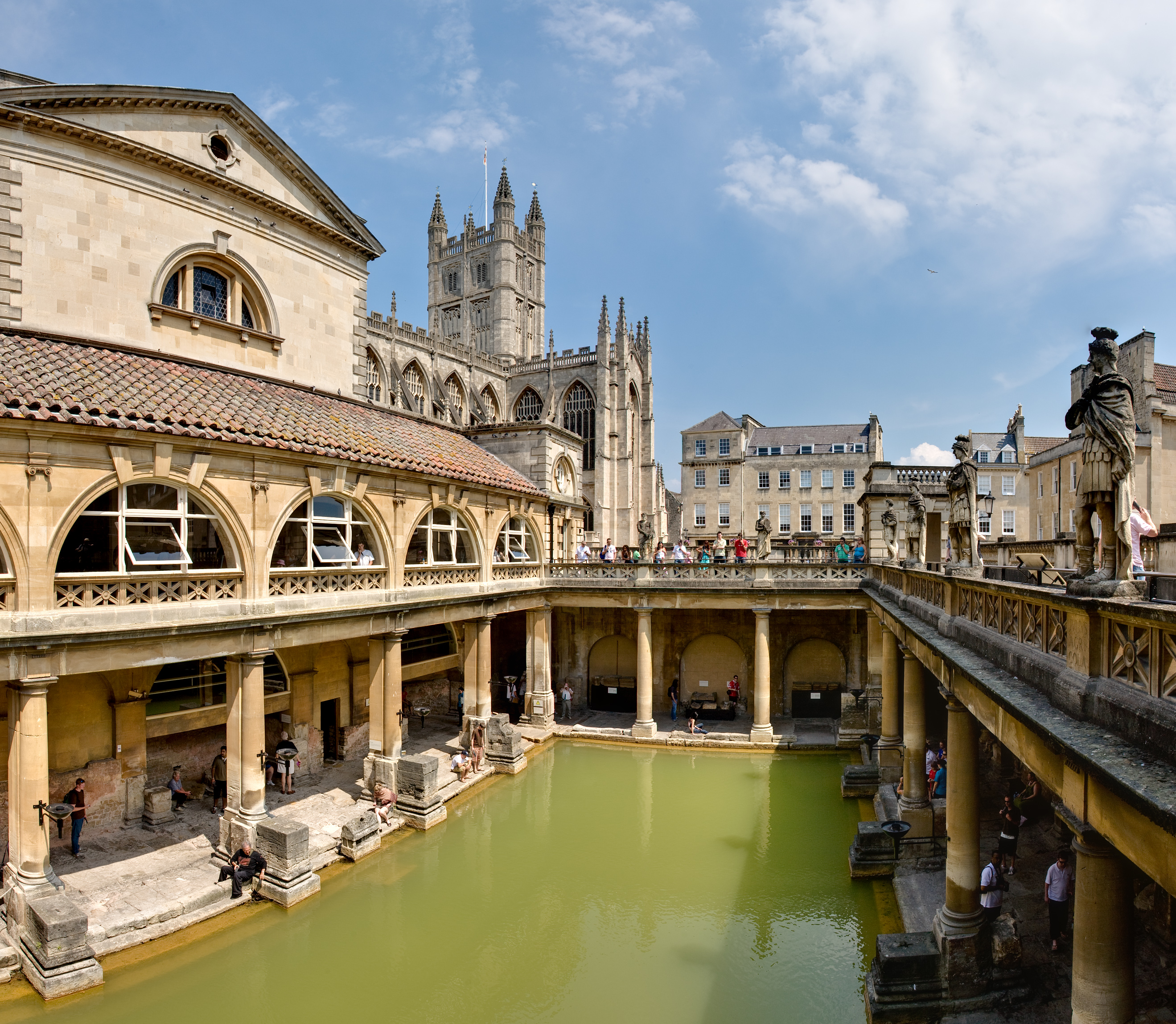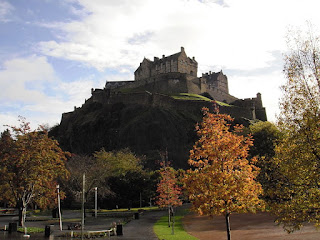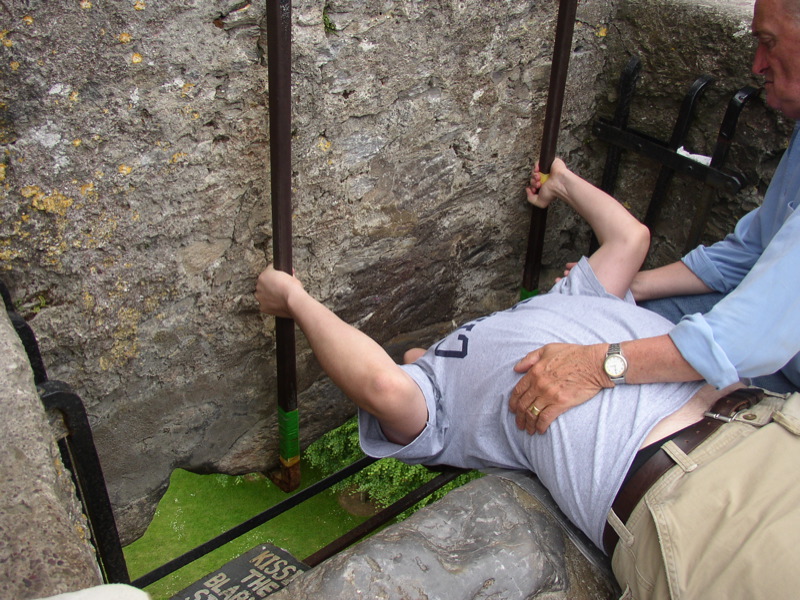 |
| Windsor Castle's Upper Ward - The Quadrangle, Windsor, Photo Image © Wikipedia |
 |
| Windsor Castle's Round Tower, Windsor, Photo Image © Karen Toh, 2010 |
Windsor:
Windsor Castle dates back to the time of William the Conquror, and continues to be the oldest and largest castle in the world to be occupied. It is one of the three official residences of Queen Elizabeth II, and that of Queen Victoria and Prince Albert during Queen Victoria’s reign. Pictures don’t do the grounds justice, unless one takes an aerial view of the castle.
Highlights:-
- State Apartments
- Queen Mary's Doll House
- Changing of the Guards
- Albert Memorial Chapel
- Round Tower
 |
| The Royal Crescent in Bath, Photo Image © Wikipedia |
Bath:
Bath has always been a favorite amongst the locals, as people visit bath for its water – from the hot springs. The Roman Baths (Museum) is one of the best preserved archeological ruins, which give you an insight into the olden day spas of the rich. The town itself is very pretty, and is best seen on foot.
 |
| The Great Bath at the Roman Baths, Bath, Photo Image © Wikipedia |
In my last two trips in Bath, I've found it a very charming city, but never did get a chance to have a good overview of this World Heritage Site. I may yet have to return for a longer visit. :p
Bath is located at the bottom of the Avon Valley, and near the southern edge of the Cotswolds, a range of limestone hills designated as an Area of Outstanding Natural Beauty. The surrounding hills give Bath its steep streets and make its buildings appear to climb the slopes. The water which bubbles up from the ground, as geothermal springs, percolates down through limestone aquifers where geothermal energy raises the water temperature. Under pressure, the heated water rises to the surface along fissures and faults in the limestone.
 |
| Jane Austen Festival 2012
Photo Image © Maria Grazia |
One of the interesting events in Bath is the Jane Austen festival that takes place once a year in September. Fans are transported back in time, dressing up in period costumes attending soirees, theatre, concerts, participating in walking tours as well as ballroom dances, etc. Women often change several times a day - morning dresses, afternoon tea dresses, and ballroom gowns. Men who participate are dressed as Gentlemen, Soldiers or Sailors.
Wiltshire:
The county of Wiltshire must be explored, as it boasts rolling chalk plains. It is this region that many come to visit – the prehistoric sites of Stonehenge and Avebury, as well as the cathedral at Salisbury. Take a walk around Avebury and look out for the Sarsen stones, which surrounds the village, or explore the mysterious secrets of Sillbury Hill, known for its prehistoric burial mound.
 |
| Salisbury Cathedral, Photo Image © Wikipedia |
- Salisbury is famous for its cathedral, the Cathedral Church of the Blessed Virgin Mary, that has the highest spire in Britain. It is worth a stop for its spire is awesome.
 |
| England's Famous Rock Group, Stonehenge
Photo Image © Karen Toh, 2010 |
- Stonehenge is world renown as a sacred site. This prehistoric site consists of a ring of enormous stones. Some of these stones weigh up to 4 tons each, and were brought in from South Wales, some 250 miles away.
A walk around the perimeter of Stonehenge is a must. You must rent the audio guides before you walk in, as there are no other guided tours. The best time to see this site is at sunset, just before they close, and because of it’s ancient rites, visits during the summer and winter solstice could mean that you would have to brave the crowds.
Beware of the birds.. Smaller than blackbirds, with a short tail, pointed head, triangular wings, starlings look black at a distance but when seen closer they are very glossy with a sheen of purples and greens. Their flight is fast and direct and they walk and run confidently on the ground. Noisy and gregarious, starlings spend a lot of the year in flocks.
Chester:
On your way to Lake District whether you’re coming from London or Manchester, I suggest you make a day trip to Chester.
Chester was a quaint little town, that has been fortified by a 2 mile circuit of red sandstone wall that dates back to the Romans. To get a feel of Chester, one should take a clockwise walk along the wall, starting with the Eastgate at the Eastgate Clock.
 |
| The Chester Rows, Photo Image © Wikipedia |
One of the highlights in Chester is ‘The Rows’, the timbered buildings known as The Chester Rows. These are two tiered shopping streets which are quite the thing on a wet day. One can literally walk on the upper gallery from one end to the other, and walk back on the lower gallery. Obviously the Romans were ahead of their time in terms of designing a shopping mall! Today, you’ll find curious little shops or boutiques.
Lake District:
Of hills and dales, this part of England is truly inspiring. The combination of mountain, lakes, sky and the occasional glimpse of the sun will reward the photographer, or provide a moody shot. This part national park truly deserves at least several days worth of exploring. The best way to take in the Lake District is by walking, cycling or driving around. If you have a car, do note that parking spaces are rather limited in the peak season and on weekends. During these periods, traffic jams are common.
There are two main bases – Keswick in the north, and Windemere in the south. Here are some pictures to convince you to visit the Lake District!
- Windermere is the largest natural Lake in England, and is located within the Lake District National Park. Like most of the Lake District, the lakes and its valley were carved out by Glaciers during the Ice Age.
 |
| Bowness on Windemere, Photo Image © Karen Toh, 2004 |
If you’re in Windemere, do make a visit to The World of Beatrix Potter in Bowness. Here you’ll find Peter Rabbit and his pals, who would love to accompany you home in various forms – soft toys, story books and more. Or visit Hill Top, the farm house near Sawrey, where Beatrix wrote many of her stories.
 |
| Peter Rabbit, Photo Image © Parker Mitchell |
- Ambleside is located at the northern end of Lake Windermere, close to Waterhead, between Wansfell and Loughrigg Fell. Ambleside is also a convenient base for touring the central areas of the Lake District, as it is a short distance to Grasmere and the Langdale valleys by car or bus. Take a short walk through the woodland to the Stock Ghyll Waterfalls or walk from Ambleside to Waterhead, where you can connect onto Lake Windermere Steamers for a Lake Cruise.
- Grasmere is charming village, and was the place where poet William Wordsworth found his words with his greatest poems. Take a guided tour his Dove Cottage, or visit Rydal Mount where he lived.
 |
| Country Estate @ Hawkshead, Lake District, Photo Image © Karen Toh, 2010 |
- Hawkshead can be found south of Ambleside, close to the hamlet of Near Sawrey. Beatrix Potter owned a farmhouse near this area, and it was here that she adopted a variety of animals – dogs, cats, and even a pet hedgehog named “Mrs Tiggywinkle”.
 |
| Castlerigg Stone Circle, Photo Image © Wikipedia |
- Keswick itself is a good base for the northern lakes. One of the highlights in this village is the ancient stone circle of Castlerigg, which is thought to be older than Stonehenge, dating back about 2,000BC. It is worth the hike along the river and up the hill to this ancient site.
 |
| Reflections @ Keswick, Photo Image © Karen Toh, 2004 |
- Derwent Water is one of the bigger lakes within the Lake District, and is accessible from Keswick.
 |
| Derwentwater from the northern shore near Keswick, Photo Image © Wikipedia |
- Wast Water is one of the deepest lakes in England. It is one of the finest examples of a glacially 'over-deepened' valley. The surface of the lake is about 200 feet above sea level, while its bottom is over 50 feet below sea level.
Carlisle and Hadrian’s Wall:
Carlisle is known as the last English city before the Scottish border, and is located in the North Western part of England, about 16 km from the borders of Scotland. It has a rich history in warfare, and has a Castle, Church and a City wall!
 |
| A Long Wall along Hadrian's Wall, Birdoswald, Photo Image © Karen Toh, 2004 |
Hadrian, the Roman Emperor, built a wall (stone and turf fortification) stretching from coast to coast to keep the barbaric Pictes, and ancient Scottish Tribe out. Today, many of these roman legacies remain, along with Birdoswald, a Roman Fort which can be found on the way from Haltwhistle to Brampton. During the spring & summer, many hikers take up the challenge to walk the wall.
 |
| Christopher Wren's south front built for William and Mary viewed from the Privy Garden, Hampton Court Palace, Photo Image © Karen Toh, 2004 |
Hampton Court:
Hampton Court Palace was originally built for Cardinal Wolsey, a favourite of King Henry VII. As Wolsey fell from favour, the palace passed to King Henry, who enlarged it.
Visitors to the Palace can now step back in time, as some of its characters come alive at Hampton Court!
London:
Ah, London is a city that grows on you. I've visited this metropolitan city three times now, and still have not had enough of it!! From history to pomp and ceremony to shopping, you can have it all in London. The best way to see London if you’re a first timer, is to take the double decker tour buses. Most tour companies have live guides or audio guides. You should also take a thames cruise. Take time to familiarize and prioritize what you wish to see.
Do not miss the following:-
- The Tower Bridge and the Tower of London (and the Beefeater Tours are a must!)
- Buckingham Palace and the Changing of the Guards (and state apartments/Galleries, if you have the time!)
- St. Paul’s Cathedral and Westminster Abbey
- The Houses of Parliament and the Big Ben
- Shakespeare’s Globe Theatre (Replica)
- The London Eye
- Covent Garden
- Oxford Street Shopping
- Broadway Theatre
- Thames Cruise
- Museum (are free!) - British Museum, Tate Modern, etc.
Day Trips outside of London that you shouldn’t miss:
- Greenwich
- Bicester Village Outlet Shopping

































































